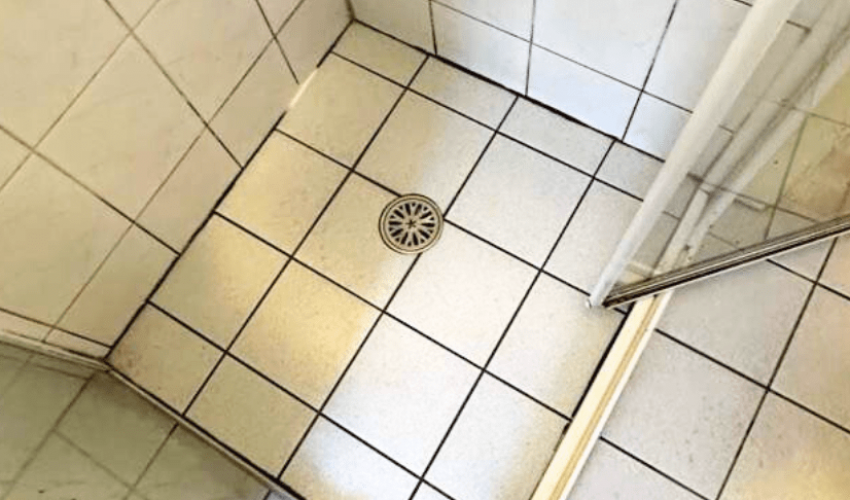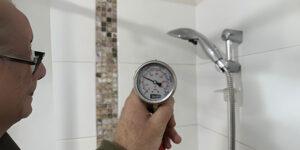Mould is a naturally occurring fungus that’s vital in the environment for breaking down organic matter—like leaves in a forest. It’s everywhere, with microscopic, airborne spores floating around us. That’s fine outdoors, but inside homes—especially bathrooms—it can become a problem when it grows excessively, causing unsightly stains, musty odours, and even potential health issues.
Bathrooms are mould’s dream spot in Canberra homes because of:
- Warm, moist environments: Steam from hot showers creates the perfect breeding ground.
- Poor ventilation: Little airflow traps moisture, letting mould thrive.
- Cold weather: Winter or rainy seasons slow drying, worsening humidity indoors.
- Laundry moisture: Running dryers inside adds to the dampness, feeding mould growth.
- If mould’s a recurring guest in your bathroom, it’s worth taking a closer look.
Many folks reach for bleach, thinking it’s the answer, but it’s actually a myth! Here’s why:
- Bleach doesn’t kill mould—it only removes the colour, leaving the roots alive.
- Mould membranes stay hidden beneath the surface, still releasing spores.
- Bleach can weaken protective surfaces like grout and walls, making them more prone to mould later.
- Bleach fumes can be harsh, especially for kids or anyone with asthma.
According to CHOICE, bleach just fades mould’s appearance—it doesn’t tackle the cause. It’ll come back, sometimes stronger. Plus, on grout lines, bleach can break down the protective coating, making it more porous and moisture-friendly—actually encouraging mould over time!
Yes, in high concentrations, it can:
- Irritate lungs, skin, and eyes.
- Damage grout, paint, and bathroom surfaces.
- Trigger asthma symptoms or respiratory issues.
- Pose risks to young children and pets.
If you do use bleach, wear gloves, goggles, and a mask, and keep the room well-ventilated—but there are better options we’ll share next.
Preventative Measures: Stop Mould Before It Starts
- Keep your shower dry: Wipe the base and walls with a towel or squeegee after use.
- Improve ventilation: Open windows and doors or use an exhaust fan to cut humidity.
- Let in natural light: Sunlight kills mould spores, so open blinds or curtains if you can.
- Use a dehumidifier: Great for bathrooms with poor airflow.
If mould’s already there, try these safer approaches:
- Mix equal parts white vinegar and water in a spray bottle.
- Spray affected areas, let it sit for 10 minutes, then wipe with a damp cloth.
- Repeat for stubborn patches—it’s gentle and effective.
- Bleach won’t kill mould but can lighten dark spots.
- Apply a small amount, rinse thoroughly, and ventilate well.
- Mix ½ teaspoon of 100% clove oil with 1 litre of water and a few drops of dishwashing liquid.
- Shake well, spray on mouldy areas, let it sit for a few hours, then wipe off—scrub if needed.
- Clove oil’s a natural antifungal that kills mould and helps prevent regrowth.
If mould keeps returning despite cleaning, it might point to bigger issues like:
- Leaking shower seals or tiles, letting water into walls.
- Waterproofing failure needing professional repair.
- Extensive infestations that might require a mould treatment specialist.
Not sure? Book a free assessment with us—we’ll check if it’s surface-level or something deeper.
If mould in your shower won’t quit, let’s find the root cause together.





